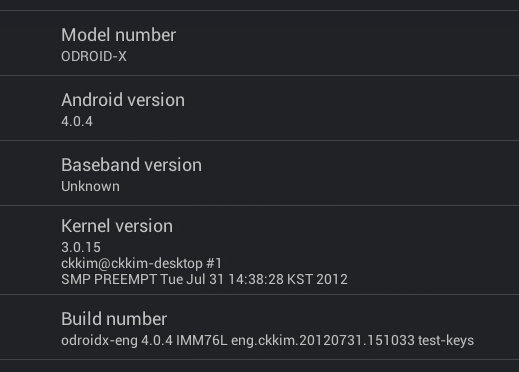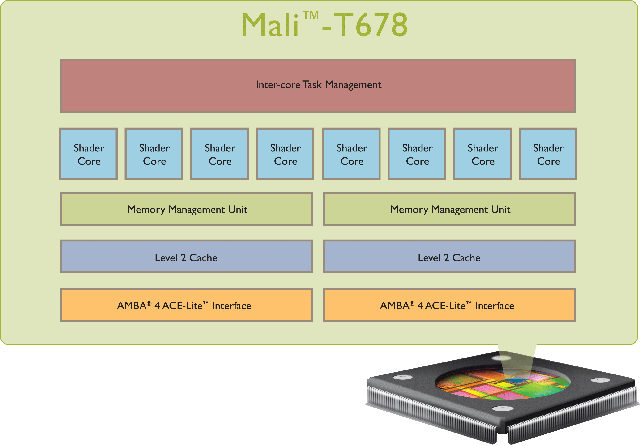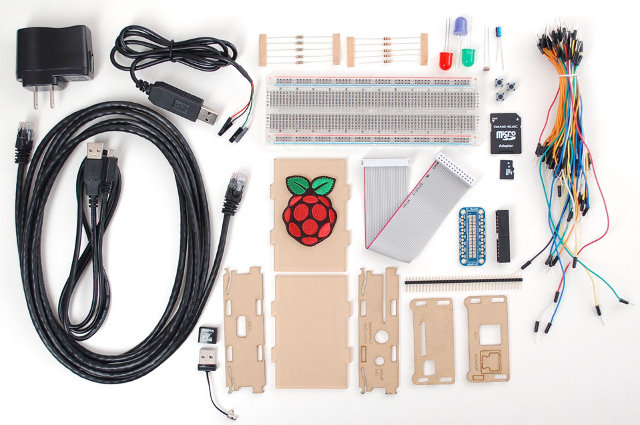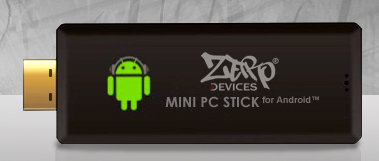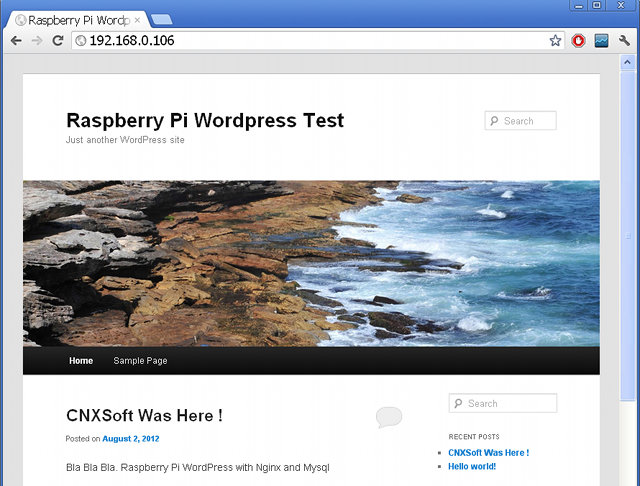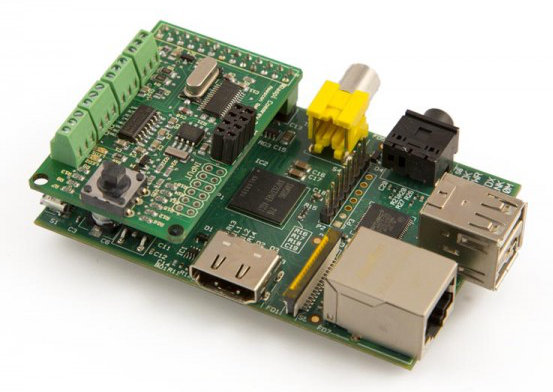Following my ODroid-X unboxing and first boot post, I planned to review ODroid-X board with both Android and Ubuntu. However, I found out that an Ubuntu image will only be released later this week, so I’ll focus on Android review for today, and try Ubuntu once it becomes available. The default firmware come with a few standards applications, and an ODROID app that: Provide links to developer resources Features a file explorer Has a WiFi section that show WiFi information such as signal strength and let you test the network performance Has a GPS section (useless for this board) Has a Sensor section, but there are none in ODROID-X. Has a camera section that let you show the camera input. It works with the module provided Has a others section with 3D compass test (not used for ODROID-X) The Dev Tools application is also installed. But there was not really […]
15 Linaro OnAir Sessions about Android, Linux, Debugging and Software QA
Linaro has planned 15 virtual conferences between Monday, August 13 and Saturday, August 18, 2012. Those online events will deal with the work done at Linaro, including software optimization, software QA, Android and Linux kernel development, Open Embedded on ARMv8 and more. Those conferences are public and anybody can join. All times indicated below are GMT+07:00 (Bangkok), so you can either mentally convert the time (recommended), or click on the links below to get the date and time in your timezone. Exploring The Performance Impact of PGO and LTO on ARM– Mon, August 13, 5:00 PM Abstract: Profile guided and linked time optimisation (PGO and LTO) are two of GCC’s cross program optimisations that should improve both the startup and runtime of typical programs. We know that they basically work on ARM but don’t know the potential speed up or the work involved in proper support. This session will cover […]
ARM Announces 3 New Midgard GPUs – Mali-T624, Mali-T628 and Mali-T678
ARM announced the second generation of the Mali-T600 Series GPUs targeting tablets, smartphones and smart TVs. Those new GPUs provide up to 50% performance increase over the first generation Midgard GPUs (T-604 & T-658) and include support for Adaptive Scalable Texture Compression (ASTC), a texture compression technique. The company explains that ASTC significantly optimizes GPU performance and increases battery life in devices. Those 3 new GPUs based on Mali Midgard architecture are named as follows: Mali-T624 – 1 to 4 cores – Market: Smartphones and smart-Tvs Mali-T628 – 5 to 8 cores – Market: Smartphones and smart-Tvs Mali-T678 – Up to 8 cores, 4x the GPU compute performance of Mali-T628 – Market: Tablets As with previous Midgard GPUs, the new GPUs support GPU compute with improves performance and energy-efficiency for math intensive activities, such as: Computational photography – computational methods of enhancing or extending digital photography Multi perspective views – […]
Adafruit Launches Raspberry Pi Starter Pack for $69.95
The Raspberry Pi is supposed to be great for hardware prototyping, but you may not know where to start and/or depending where you live it might be difficult to buy the small components needed at a decent price. That’s where Adafruit Raspberry Pi starter pack comes into play. It includes a case, some cables and power supplies, as well as a breadboard and a whole bunch of components. The package includes: Adafruit clear acrylic Pi Box USB Micro-B Cable to connect the Raspberry Pi to a power source 5V 1A power adapter USB TTL console cable to be used to access the serial console. Useful to debug the kernel or if you run your device without display and/or network. 4GB SD Card Adafruit Pi Cobbler kit with GPIO cable for connection to the GPIO/I2C/SPI/Power pins. USB microSD card reader for loading the image onto the SD card. Large full-size clear […]
Zero Devices Z902 mini PC Can Now Be Pre-ordered for $75
Zero Devices Z902 is an upgrade of Zero Device Z802 (virtually identical to MK802) mini PC powered by AllWinner A10, with 1 GB RAM, a total of 3 USB ports (1 USB Host and 2 mini USB ports) and an HDMI male connector. The device will eventually sells for $89, but the company currently offers the 500 first pieces for pre-order for $75 US including shipping via Asiapads. The company expects the first batch to be shipped by the end of August (25th to 31st). The package includes a micro USB to USB (male) cable, a microUSB to USB (female) adapter, an HDMI female to male cable for those who can’t or don’t like connect the device directly in the TV, and a mini CD with a user manual in English. Jean-Luc Aufranc (CNXSoft)Jean-Luc started CNX Software in 2010 as a part-time endeavor, before quitting his job as a software […]
HardKernel ODroid-X Development Board Unboxing and First Boot to Android
I’ve just received the ODroid-X development board based on Samsung Exynos 4412 quad-core processor together with lots of accessories: WiFi-Modules Kit USB-UART Module Kit 16 GB eMMC Module 5V/2A Adaptor 10.1″ LCD Module (1366×768) BlueTooth Dongle Camera Module HDMI Cable Since there is quite a lot of things to cover, today I’ll just show some unboxing pictures, how to connect all those modules to the board and run Android pre-loaded in the eMMC module, and I’ll do a more detailed review with Android and Ubuntu in another post. I received the kit in a large box sent via EMS. Here’s a picture with the board and all accessories present in the Box. From top left to bottom right: 10.1″ LCD Modules, ODroid-X development board, HDMI to mini HDMI cable, micro USB to USB cable (for debugging), 5V/2A power supply for the board, 9V/1.5A power supply for the LCD module, WiFi […]
WordPress for Raspberry Pi using Nginx and MySQL
I’ve been wondering how the Raspberry Pi would handle WordPress. I’ve found some instructions using Apache 2, but this may not be the best server to use for this type of low-end hardware. nginx server requires less resources, and as it is what I already setup for this blog, I decided to give it a try on the Pi. I’ll provide all the detailed steps I followed below, but you can also download the compressed SD card image (113 MB), uncompress it and copy it to an SD card the usual way. After the system boots, find your Raspberry Pi’s IP address, type it in your PC’s browser, and you should see the page pictured below. If you want to login to the dashboard, the username is “admin” and the password “raspberry”. Instructions to Install WordPress on Raspberry Pi You can use your default Debian Linux distribution (e.g. Raspbian) if […]
RasPiComm – Raspberry Pi Expansion Board
Daniel Amesberger has designed a tiny expansion board called the RasPiComm to make use of the extension header of the Raspberry Pi board. It connects to the RPi in a similar way to the shields for the Arduino board. The board comes with the following extensions: RS-485 port – Mainly used to control stepper motors. RS-232 (‘serial’) port – It can be used to access the serial console over “/dev/ttyAMA0″ serial device, which can be very useful for headless systems. 5 inputs connected to an onboard joystick and screw terminals 2 outputs (5V) with LEDs (green and red) also connected to screw terminals I2C connection – There are plenty of things you can do with I2C connections (Sensors, RTC, …), and Daniel successfully connected a tiny 128×64 I2C OLED display. Real time clock (RTC) with backup battery – Very useful for offline use if you need to keep track of the […]


